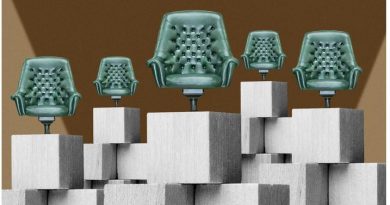Why your leaders need to stop the self-sacrifice cycle
The seductive lure of corporate and societal quicksand can leave people ‘stuck’ in a harmful experience of what seems like necessary self-sacrifice. Here are some ways to escape the quagmire.
During the often-fraught climb up the corporate ladder, leaders can find themselves caught up in a cycle of self-sacrifice which is harming their mental health and emotional wellbeing.
External events such as the global pandemic, the cost-of-living crisis, and The Great Resignation are amplifying the problem. In a bit to appease, protect, and sustain their people and businesses, these leaders often concede their own needs and prioritize everyone else’s to their detriment.
Naturally, a large part of a leader’s remit is the wellbeing of their teams but in order to be effective in this role, leaders need to be able to lead from a place of empowerment and strength – not self-sacrifice.
The conditions organisations face today are rapidly shifting and laced with fiscal, political, sociological, health and ecological consequences
What is the leadership paradox?
The paradoxical nature of life as a leader demands a relentless work ethic but also an ability to maintain their well-being and quality of life. This presents as the drive to progress continuously, yet the need to slow down, stop and learn from mistakes and failures. There is also an expectation to be an ambitious and driven high achiever yet have humility and express compassion for the people around them. As the list of demands on leaders grows, how can a leader feel their authentic self?
It is confusing and draining to be pulled in opposing directions. It is also difficult to distinguish between what they need as a person, how that relates to their work, the contribution they make and how it fulfills their aspirations, values and desires. It’s no wonder self-sacrifice occurs when the demands upon leaders can feel so intense.
Why do leaders self-sacrifice?
In our organizations, there is already an inherent tension between the seductive reality of success and the primal need to protect financial stability and safety – to keep a roof over our heads and feed our families. Golden handcuffs (incentivized agreements that lock people in for specific periods) can hook and chain high achievers into committing to whatever it takes to perform and deliver, leaving them with a sense of hopeless disempowerment and a need to put up with whatever is thrown at them while they wait it out.
Furthermore, the conditions organizations face today are rapidly shifting and laced with fiscal, political, sociological, health, and ecological consequences. As a result, the pressure to make the right decisions is making leaders overextend their efforts and energy, sacrificing their own well-being or needs as a result.
We now face a mass of bold organizational paradigms demanding the fastest, best, biggest, and most impressive, while driving individuals to outperform themselves. In the absence of true reflective thought and inquiry, those same individuals may become ‘monsters in the machine’ and only later realize what has happened to them in their quest to satisfy organizational demands.
This realization could lead to what we traditionally call a midlife crisis, but who knows what form it will take for future generations as the pace of development, expectations, and possibilities continuously increases?
It’s clear that a new definition of leadership is needed to balance these competing tensions and ensure leaders are healthy and empowered.
Leaders justify the need for self-sacrifice because it is driving growth or protecting other
What is the impact of this relentless pace?
Many leaders will default to try and do it all without fail, even when faced with the inevitable blows that come with the need to deliver significant results, adapt to changing goalposts, make do with incomplete teams, capacity, or capabilities, and engage resistant shareholders – all at a cost to their own sanity and wellbeing.
But something has to give. Leaders justify the need for self-sacrifice because it is driving growth or protecting others. However, many organizations compromise quality in their quest to do too much. They fail to achieve results on costly initiatives, fall short of objectives, and do not deliver the expected return on investment unless there is a clear focus. This is especially true given the finite time, resources and rapidly growing expectations of customers and consumers.
Requiring people to do whatever it takes to deliver results in an unremitting dynamic that sweeps through the veins and arteries of our leaders, draining away their lifeblood. According to the World Economic Forum’s (WEF) data, in 2019, an estimated 275 million people – about 4% of the world’s population – suffered from an anxiety disorder.
Despite the continued encouragement from business schools, literature, and discourse for leaders and managers to adopt espoused behaviors such as being purposeful, agile, humble, and empathetic and model caring for their own and others’ wellbeing, there are still many leaders who feel stuck.
How can your leaders move beyond self-sacrifice?
Moving beyond a model of self-sacrifice and ‘results at any cost’ requires considerable cultural change, but there are some ways leaders can kickstart modeling these principles in their business.
1. Decipher between what is important and urgent
These do not mean the same thing but are sometimes used interchangeably. Our constant task focus in organizations means everything feels urgent, but this is not always the case. Clarity on the purpose of operational activity comes with making space to define and align strategic foci as well as a realistic picture of constraints.
2. Encourage leaders to claim personal agency
Countless leaders feel caught up in this dynamic with little or no ability to take a step back, notice what they feel, become aware of the impact on their health, reflect, and question what needs to change. Leaders who lack a sense of personal choice and agency could sleepwalk into compromising situations. Make room for leaders to contextualize personal intentions as organizational choices are determined and made.
3. Understanding a holistic sense of our ‘self’
Every individual is a beautifully complex being – physically, mentally, and emotionally. Taking time and understanding how to embrace and unleash the entirety of our complex selves. This is a clarifying and challenging process, but a necessary step in understanding personal needs, prioritizing boundaries, and reconciling consequences between individuals and the organization.
Taking breaks that combine fresh air and walking stimulates the body and brain in a different way
4. Space for mindfulness
Experimenting with meditation and alternative practices is important, however, I see (myself and many) people caught up in a rhythm of life that follows a rapid drum beat powered by human-made expectations focused on producing outcomes.
A simple way in which I encourage leaders to generate a more mindful space for themselves and others is by integrating nature into their day-to-day lives. Taking breaks that combine fresh air and walking stimulates the body and brain in a different way – interrupting the intensity of operational activity and infusing the body with movement and spaciousness to feel, see and think differently.
Source: https://www.trainingzone.co.uk/lead/culture/why-your-leaders-need-to-stop-the-self-sacrifice-cycle




